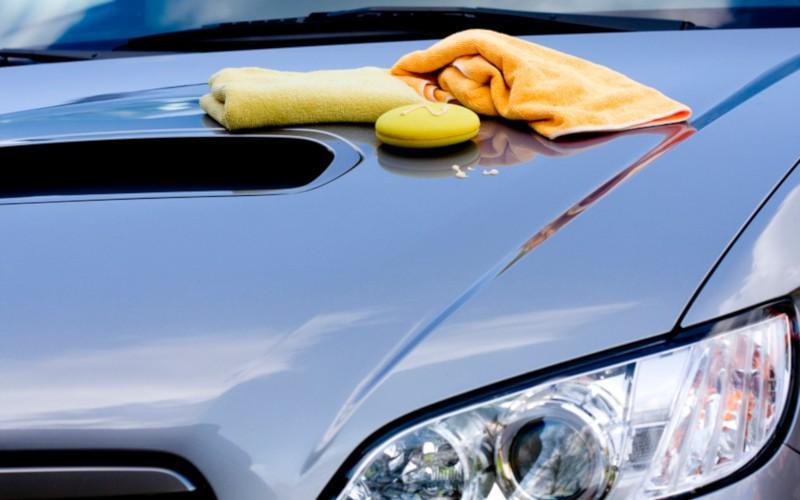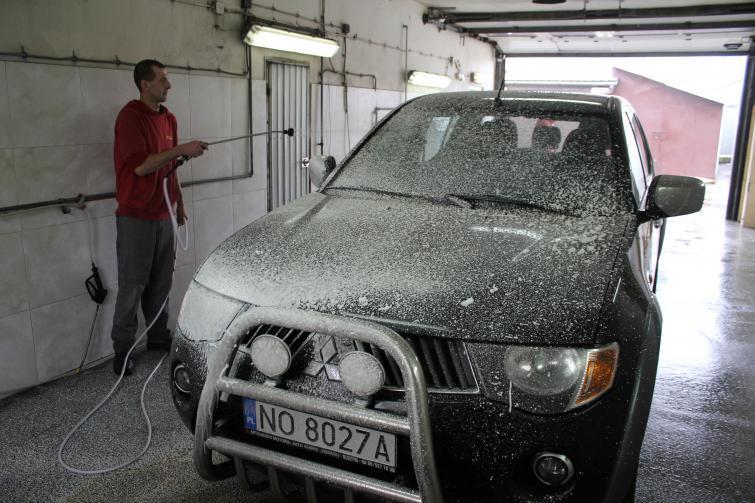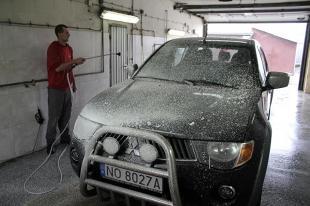
Protect your car's paintwork from the winter - wax helps keep it shiny
 Salt, sand, gravel and low temperatures are the enemies of car paint. To keep the body after the winter in good shape, it is worth protecting it properly.
Salt, sand, gravel and low temperatures are the enemies of car paint. To keep the body after the winter in good shape, it is worth protecting it properly.

The car paintwork consists of several successively applied layers. At the factory, the body is first treated with an anti-corrosion agent, and then painted with a primer. Only the surface prepared in this way is covered with colored and colorless varnish, which gives the car a shine and protects the color from damage.
varnish becomes dull
However, the top layer loses its properties over time. When subjected to changing weather conditions and extreme air temperatures, paintwork becomes increasingly dull. Washing, especially in an automatic car wash, leaves scratches, bird droppings leave unsightly stains. Impacts of pebbles while driving end in microfragments and cavities, which, in the absence of protection, most often turn into centers of corrosion. The paintwork is especially vulnerable to damage in winter when road builders sprinkle sand and salt on roads, as well as gravel outside the city. Sharp grains pierce chips and scratches on the paintwork, which is why the car looks much worse after the season.
Start with repairs
Therefore, before winter, you should think about careful protection of the body. The easiest way is waxing, which creates an elastic, shiny protective layer on the varnish. However, before we start with them, it's worth thinking about filling the cavities in the varnish. Diapers, scratches and chips are the most susceptible to corrosion, so start working with them.
See also: all-season tires lose winter. Find out why.
At home, with the help of basic tools, only minor damage can be removed. To do this, the bruised or scratched place must be carefully cleaned with fine sandpaper and degreased, for example, with gasoline. Then we apply a layer of anti-corrosion primer. After drying, cover with paint, and finally with a layer of transparent varnish. Ready-made touch-up kits (primer, base and clear varnish) can be purchased at automotive stores. They cost about 50 zł. In order for the varnish to be perfectly matched, it is better to avoid products selected “by eye” based on a cardboard probe. It is better to add paint in the room for mixing varnishes. Depending on the recipe, you can order 100-200 ml. Prices depend primarily on the manufacturer and for such an amount they fluctuate between PLN 20-60. Some authorized service stations also sell ready-made touch-up paints designed for a specific body color number. You can buy a ready-made jar with a brush for about PLN 30-50.
Two hours with a professional
After filling the cavities, you can start waxing. A professional service at a paint shop or car wash costs around PLN 60-100. It consists in a thorough washing and drying of the car. Only after that you can start applying wax.
See also used tires and wheels. Are they worth buying?
– The best choice is hard waxes, which are applied by hand. In the case of a passenger car, the service takes 1,5-2 hours. The preparation is more difficult to apply than a paste or milk with the addition of wax, but the effect is better. A protective layer is formed on the paint, which remains for a long time when using non-aggressive cleaning agents, says Paweł Brzyski, owner of the Auto-Błysk car wash in Rzeszow.
Currently the most recommended are waxes containing carnauba extract. It is obtained from the leaves of fennel, which grows in Brazil. It is one of the hardest natural waxes in the world, used in particular in the preservation of works of art. Teflon-based preparations are also often used.
See also: Are winter tires overrated? Many say yes
Experts recommend waxing two to three times a year. Preferably in autumn, spring and summer. Coating a car with liquid wax, for example, in a hand wash, has little to do with applying the preparation by hand. “I would compare them to washing a car with waxed shampoo. Yes, this is also useful, but the effect is much worse. It is more cosmetic than protection, says Paweł Brzyski.
A warm garage is essential
Can you polish your car yourself? Yes, but this requires the appropriate conditions. First of all, this is a warm room, since at low temperatures it is very difficult to apply wax to the paintwork. Before starting treatment, the car must be thoroughly washed and dried. Water from nooks and crannies near the rails and seals is best blown out with a compressor. Otherwise, the mixture with wax will make it difficult to polish the body. You should also seal the plastic elements with tape, paper or foil, from which it is very difficult to wipe off hard wax. In automotive stores, a package of such a drug can be bought for about 30 zł.
See also: 10 things to check in the car before winter
– The popular Formula 1 paraffin costs PLN 29 for a 230-gram package. This is easily enough to service the car body several times. Wax lotions are easier to use. For example, a half-liter bottle of Sonax costs about PLN 48, while T-Cut costs about PLN 32. They also contain protective and nutritious substances. An alternative is a polishing and protective paste. Prices, depending on the manufacturer, range from PLN 10 to PLN 30, says Pavel Filip from the SZiK car shop in Rzeszow.
The use of pasta or milk, especially in winter conditions, is somewhat easier, but also requires positive temperatures. So without a warm garage you can't move.
Governorate Bartosz
photo by Bartosz Guberna

